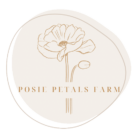Growing Corn: A Complete Guide for Home Gardeners
Corn is one of the most rewarding crops to grow in the home garden. Not only is it a staple food in many cultures, but its tall, leafy stalks also add architectural interest to your garden beds. Whether you’re dreaming of buttery sweet corn on the cob or popcorn by the fire, growing your own corn is well worth the effort. Follow me and learn all about how to grow corn!

This guide covers everything from choosing varieties to dealing with pests and diseases, and it even touches on companion planting to help you build a productive and healthy garden.
Understanding Corn Types: Hybrid vs. Heirloom
Hybrid Corn: Bred from two parent plants for traits like disease resistance or sweetness. Predictable and higher yielding, but saved seeds won’t grow true to type.
Heirloom Corn: Open-pollinated and passed down for generations. Rich flavor and diversity, but may require more attention and are sometimes more vulnerable to pests.
Easiest and Hardest Corn Varieties to Grow
Easy Varieties:
- Golden Bantam (Heirloom): Sweet, reliable, and flavorful. Great for beginners.
- Honey Select (Hybrid): Very sweet and resistant to common corn diseases.
- Peaches and Cream (Hybrid): Popular bi-color variety with tender kernels.
Challenging Varieties:
- Glass Gem (Heirloom): Visually stunning, but slow to mature and vulnerable to pests.
- Chires Baby Corn: Requires frequent harvesting; ideal for stir fry lovers.
- Oaxacan Green Dent (Heirloom): Flour corn with a long growing season.

How to Plant Corn
Corn loves full sun and well-drained, fertile soil. Work in compost or aged manure before planting to feed this nutrient-hungry crop.
Sow seeds 1–2 inches deep, 8–12 inches apart in rows that are 24–36 inches apart. Instead of long single rows, plant in short blocks of 3–4 rows for better wind pollination.
Succession Planting for a Longer Harvest
To spread out your harvest, plant new corn every 2–3 weeks for a total of 2–3 plantings (depending on your growing season). Use shorter maturity varieties for late plantings.
- First Planting: 1 week after last frost
- Second Planting: 2–3 weeks later
- Third Planting: 2–3 weeks after that
Common Corn Pests and Solutions
- Corn Earworms: Use mineral oil or Bt on ears when silks appear.
- Cutworms: Place cardboard collars around seedlings.
- Aphids: Control with neem oil or attract ladybugs.
- Birds & Raccoons: Install netting or motion sprinklers.
Disease Prevention
- Rust: Rotate crops and remove infected leaves.
- Smut: Remove galls promptly and avoid composting them.

Companion Planting for Corn
Try the classic “Three Sisters” method for a symbiotic planting combo:
- Beans: Fix nitrogen and support stalks.
- Squash: Suppresses weeds and retains soil moisture.
- Cucumbers: Similar benefits to squash.
- Dill & Basil: Attract beneficial insects like pollinators.
Plants to Avoid:
- Tomatoes: Compete for nutrients and attract shared pests.
- Brassicas: Require different nutrients and growing conditions.
- Fennel: Generally inhibits other plants’ growth.
Harvesting Tips
When silks are brown and ears are full, peel back the husk and puncture a kernel. If a milky liquid appears, the corn is ripe. Clear juice means it needs more time; a starchy consistency means it’s too late.
Harvest early in the morning and refrigerate immediately to retain sweetness.

Quick Tips Recap
- Plant in blocks, not rows.
- Succession plant every 2–3 weeks.
- Use compost and mulch regularly.
- Monitor for pests and act early.
- Harvest when kernels are plump and silks are brown.
🌽 Follow Along on Instagram!
If you enjoyed this guide, you’ll love the behind-the-scenes of our garden life! Follow me on Instagram for daily updates, planting inspiration, and real-time garden tips.


